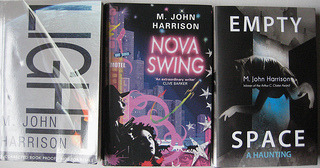On Singularities, mathematical and metaphorical

On his site SOFT MACHINES, Richard Jones discusses the metaphorical singularity.
Transhumanists look forward to a technological singularity, which we should expect to take place on or around 2045, if Ray Kurzweil is to be relied on. The technological singularity is described as something akin to an event horizon, a date at which technological growth becomes so rapid that to look beyond it becomes quite unknowable to us mere cis-humans. In some versions this is correlated with the time when, due to the inexorable advance of Moore’s Law, machine intelligence surpasses human intelligence and goes into a recursive cycle of self-improvement.
The original idea of the technological singularity is usually credited to the science fiction writer Vernon Vinge, though earlier antecedents can be found, for example in the writing of the British Marxist scientist J.D. Bernal. Even amongst transhumanists and singularitarianists there are different views about what might be meant by the singularity, but I don’t want to explore those here. Instead, I note this – when we talk of thetechnological singularity we’re using a metaphor, a metaphor borrowed from mathematics and physics. It’s the Singularity as a metaphor that I want to probe in this post.

So here we’re back at the metaphorical singularity – and perhaps metaphors are best left to creative writers. If we want a profound treatment of the metaphors of singularity, we should look, not to futurists, but to science fiction. I know of no more thought-provoking treatment of singularities and the singularity than that of M. John Harrison in his brilliant trilogy, “Light”, “Nova Swing” and “Empty Space”.
At the astrophysical centre of the trilogy is a vast, naked singularity. Bits of this drop off onto nearby planets, leading to ragged borders beyond which things are familiar but weirdly distorted, a ragged edge across which one can with some risk move back and forth, and which is crossed and recrossed by herds of inscrutable cats. The human narrative crosses back and forth between a near-present and a further future which feels very much post-singularity. This future is characterised by routine faster-than-light travel, “shadow operators” – disembodied pieces of code which find unexplained, nanobot like substrates to run on, radical and cheap genetic engineering leading to widespread, wholesale (and indeed retail) human modification. There is a fully realised nano-medicine, and widely available direct brain interfaces, one application of which turns humans into the cyborg controllers of the highest performing faster-than-light spaceships. And yet, the motivations that persuade a young girl to sign up to this irreversible transformation seem all too recognisable, and indeed the familiarity of this post-singularity world seems all too plausible.
Beyond the singularities, beyond the space opera setting and Harrison’s brilliant and stylish writing, the core of the trilogy concerns the ways people construct, and reconstruct, and sometimes fabricate, their own identities. It’s this theme that is claimed by transhumanism, but it’s one that seems to me to be very much more universal than that.
Check out the rest of Jones’ fascinating article at SOFT MACHINES.

